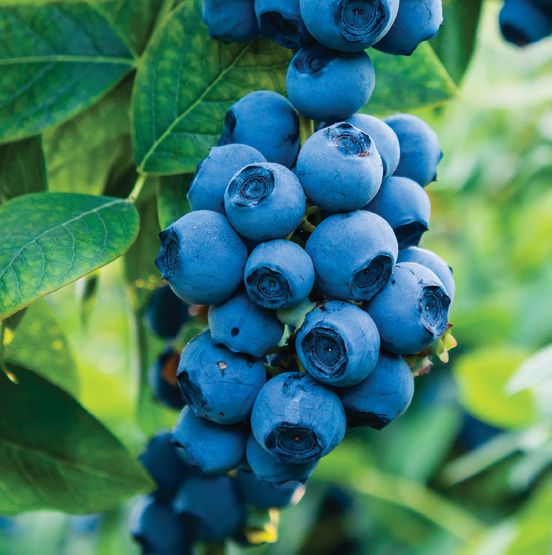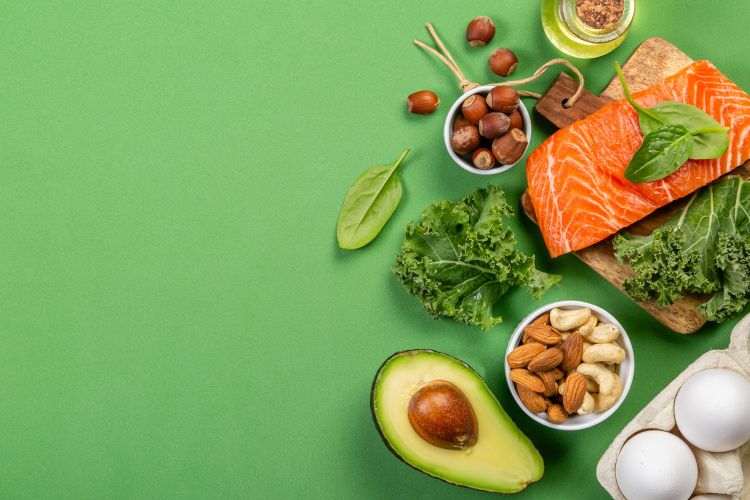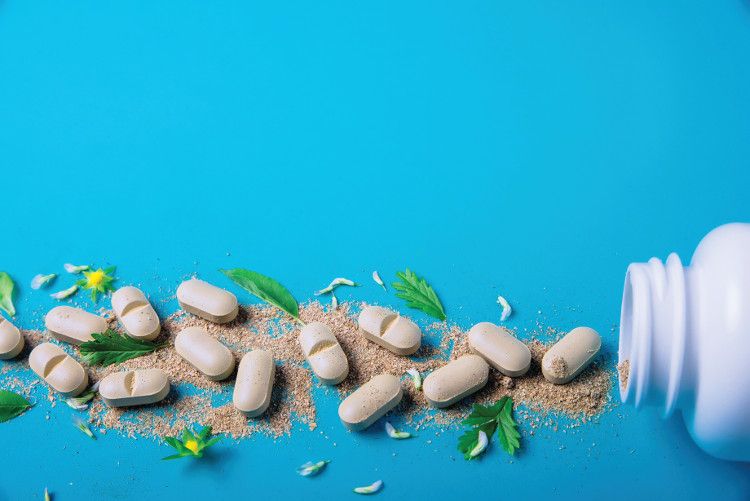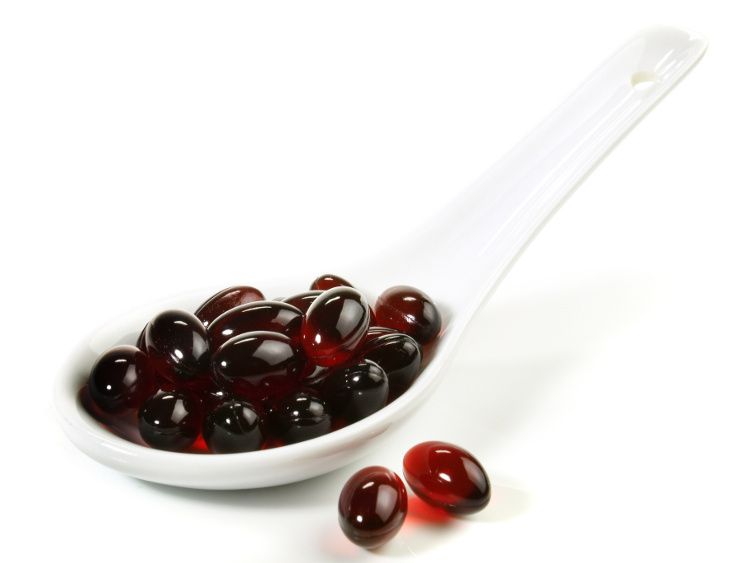Are excited to know where your favorite food comes from? Well, if yes, then you are just in the right place. We will let you know the biggest food-producing and exporting countries in the world in recent years. You can also check out this list to find out what product your country exports all around the world. So, let's get starte3d!
? To Coffee Exporting Countries in the World- 2019
The enchanting smell of coffee surely never gives you time to stop and ponder about its origin. However, to get the best coffee available in the world right now, it is surely good to know the top coffee-producing countries.
When talking about the biggest food-producing and exporting countries in the world, coffee is there to sway your mind from the essentials. Here is the list of biggest coffee-producing countries.
• Brazil
Coffee Production (Metric Tons): 2,592,000
Coffee Production (Pounds): 5,714,381,000
Brazil is the largest coffee producer in the world. And it's not something new, rather Brazil has been on the top for more than 150 years. Brazil cultivates coffee on over 27000 square kilometers of the land. And the major states to grow coffee include Parana, Sao Paulo, and Minas Gerais. These states have the best climatic conditions for the production of high quality coffee beans.
• Vietnam
Coffee Production (Metric Tons): 1,650,000
Coffee Production (Pounds): 3,637,627,000
Vietnam is the second largest coffee producer in the world. And coffee export has remained the biggest part of the Vietnamese economy. There has been an understandable bump in the course of coffee production and export during the Vietnam War, but things got smooth later on. Vietnam produced 6000 tons of coffee in 1975 and the production rapidly increased and reached almost 2 million now.
• Colombia
Coffee Production (Metric Tons): 810,000
Coffee Production (Pounds): 1,785,744,000
Colombia's delicious coffee is renowned all across the globe for its unique taste. However, with the change in climatic conditions from 1980 to 2010, there was a decrease in the production and thus the export of the coffee in Colombia. The temperature and precipitation of the cultivating region increased thus reducing the growth of the coffee plants. And because of that, Colombia cam down to third place instead of its long reign on the second spot.
Here is the list of major coffee producing countries,
• Indonesia
Coffee Production (Metric Tons): 660,000
Coffee Production (Pounds): 1,455,050,000
• Ethiopia
Coffee Production (Metric Tons): 384,000
Coffee Production (Pounds): 846,575,000 • Honduras
Coffee Production (Metric Tons): 348,000
Coffee Production (Pounds): 767,208,000 • India
Coffee Production (Metric Tons): 348,000
Coffee Production (Pounds): 767,208,000 • Uganda
Coffee Production (Metric Tons): 288,000
Coffee Production (Pounds): 634,931,000 • Mexico
Coffee Production (Metric Tons): 234,000
Coffee Production (Pounds): 515,881,000 • Guatemala
Coffee Production (Metric Tons): 204,000
Coffee Production (Pounds): 449,743,000 • Peru
Coffee Production (Metric Tons): 192,000
Coffee Production (Pounds): 423,287,000
• Nicaragua
Coffee Production (Metric Tons): 132,000
Coffee Production (Pounds): 291,010,000
• China(2013/14 est.)
Coffee Production(Metric Tons): 116,820
Coffee Production (Pounds): 257,544,000 • Ivory Coast
Coffee Production(Metric Tons): 108,000
Coffee Production (Pounds): 238,099,000 • Costa Rica
Coffee Production (Metric Tons): 89,520
Coffee Production (Pounds): 197,357,000 ? Most Potato Producing Countries- 2017
For its immense demand around the globe, potato is largely produced on the agricultural lands. The biggest food-producing and exporting countries in the world which have good environmental conditions for the growth of the potato, cultivate potato in huge amounts. Here is the list of top potato producing countries as of the last data available of the year 2017 by the Food and Agriculture Organization of the United Nation. The total production of potatoes in the world in 2017 was 388,190,674 metric tons of which 25.6% was exported from China alone. And the top 5 rice producers fulfill more than 55% of the total potato export.
• China
Crop Production (Metric Tons): 99,205,580
Potato production is considered one of the top exporting crops in China, and thus the Chinese Government takes all the necessary measures to increase its production in every passing year. Moreover, China's domestic demand has also increased in recent years as well. An increase in the domestic demand o potatoes is thanks to the rapid industrialization of China. With the improvement in the financial status of the people, they start modernizing their lifestyle. And with that comes appeal for the westernized food and that included several dishes of potato. About 10 to 15% of the total potato production of China is used to make processed potato products such as chips, and frozen products.
• India
Crop Production (Metric Tons): 48,605,000
India has a huge agricultural land and it uses it perfectly. Potato production and export of India widely increased in the 20th century and the country never looked back since. With an increase of more than 850 percent production rate of the potato crops from 1960 to 2000, there was also an increase in domestic appetite towards potato recipes. Just like the case with China, the domestic increase in the demand for potato was also because of the rapid industrialization of the country. Improved economy affected Indian household and thus people changed their living style towards the betterment. In the year 1990, India used to consume about 12 kilograms of potato a year then in the 2000s that number increased dynamically and came up to 25.53 kilograms a year. India now produces more than 48.61 million metric tons of potatoes every year.
Other major countries that produce and export potato in enormous quantities include,
• Russian Federation
Crop Production (Metric Tons): 29,589,976 • Ukraine
Crop Production (Metric Tons): 22,208,220 • United States
Crop Production (Metric Tons): 20,017,350 • Germany
Crop Production (Metric Tons): 11,720,000 • Bangladesh
Crop Production (Metric Tons): 10,215,957 • Poland
Crop Production (Metric Tons): 9,171,733 • Netherlands
Crop Production (Metric Tons): 7,391,881 • France
Crop Production (Metric Tons): 7,342,203 • Belarus
Crop Production (Metric Tons): 6,414,755 • United Kingdom
Crop Production (Metric Tons): 6,218,000 • Islamic Republic of Iran
Crop Production (Metric Tons): 5,102,342 • Turkey
Crop Production (Metric Tons): 4,800,000 • Peru
Crop Production (Metric Tons): 4,776,294 • Algeria
Crop Production (Metric Tons): 4,606,403 • Belgium
Crop Production (Metric Tons): 4,416,665 • Canada
Crop Production (Metric Tons): 4,410,829 • Egypt
Crop Production (Metric Tons): 4,325,478 • Pakistan
Crop Production (Metric Tons): 4,142,399 ? Most Mangoes Producing Countries- 2016
While reading this list of the biggest food-producing and exporting countries in the world, you must be wondering about the inclusion of any fruit. Well, we have chosen the king of all fruits for that matter and that is mango. Mango is one of the most loved fruit all across the globe. This tropical fruit is grown on large trees that reach up to 100 feet high and 12 feet in diameter. It has a single pit and comes in a variety of colors including red, green, orange, and mostly yellow. This yummy fruit is native to Pakistan, India, and Bangladesh. Mughal emperor Akbar who reigned in the 16th century planted more than 100,000 mango trees at a place now named Lakhi Bagh located in India. In addition to these native countries, in the 15th and 16th centuries, the mango was traded and introduced to Africa, the Philippines, and Brazil. Now, you can taste the flavors of mango all across the globe thanks to the following exporters of the fruit.
• India
Mango Production (Tons): 18,779,000
With the export of more than 18 million tons of mangoes a year, India is top on the list of biggest producers and exporters of the mango. India is solely responsible for about 50% of the total worldwide export of mango. Major states of India where mango is mainly produced include Andhra Pradesh, Bihar, Maharashtra, Orissa, Gujrat, and Karnataka. Along with these major states, other states of India also produce mango, but not in such large quantities. In total, India has dedicated more than 2,309,000 acres of land for the production of mango only.
• China
Mango Production (Tons): 4,771,038
China is becoming the major producer and exporter of several foods in recent years. That is because of the drastic and dynamic Government policies in the production and trade departments. And this is the main reason that has put China on the second spot for producing mangoes with the production of about 4.77 million tons of mango every year. Although mango is being cultivated on the soil of China for centuries China started producing mangoes significantly back in the 1960s and the quantity is rising with each passing year. The main regions of China that produce mangoes in handsome amounts include Hainan Province, Guangxi Autonomous Region, Guangdong Province, Yunnan Province, Sichuan Provinces, and Fujian Province. China has dedicated more than 120,000 hectares of land for the production of mangoes as per the states generated in 2008.
• Thailand
Mango Production (Tons): 3,432,129
Thailand comes on the third spot after India and China with the production of more than 3.4 million tons of mango production a year. The main portion of this production is sold freshly in the domestic markets. On the other hand for the export, Thailand mostly sends processe3d mango in canned, dried, or frozen form. Fresh fruit is also exported. Thailand's fresh mangoes are popular in South Korea, Malaysia, China, Singapore, and Japan. Thailand cultivates mango trees in more than 753,671 acres of the land. And the country has gained more than 50 million USD with mango's export.
The following are the names and production amount of the major mango producing countries.
• Mexico
Mango Production (Tons): 2,197,313 • Indonesia
Mango Production (Tons): 2,184,399 • Pakistan
Mango Production (Tons): 1,606,091 • Brazil
Mango Production (Tons): 1,417,149 • Egypt
Mango Production (Tons): 1,277,008 • Bangladesh
Mango Production (Tons): 1,161,685 • Nigeria
Mango Production (Tons): 917,617 • Philippines
Mango Production (Tons): 827,075 • Sudan
Mango Production (Tons): 785,940 • Kenya
Mango Production (Tons): 734,658 • Vietnam
Mango Production (Tons): 725,306 • Haiti
Mango Production (Tons): 670,878 • Tanzania
Mango Production (Tons): 427,586 • Cuba
Mango Production (Tons): 420,191 • Yemen
Mango Production (Tons): 405,774 • Peru
Mango Production (Tons): 377,382 • Colombia
Mango Production (Tons): 314,034 ? Most Milk Producing Countries- 2019
Milk is one of the most important food for health and that is why it is high in demand all across the globe. Both, milk's production and export is raising in the world with each passing year. Among the biggest food-producing and exporting countries in the world, specifically speaking about the ilk, the European Union was the leading exporter of the cow's milk in the world for the year 2019. In 2019, 28 countries of the EU produced about 155.3 million metric tons of milk in total. The United States reserved the second spot with the production of more than 99 million metric tons of milk. The following are the major milk-producing countries in the year 2019.
• European Union -28
Milk Production in Million Metric Tons: 155.3
A total of 28 courtiers of the European Union produced the major portion of the world's milk with a collective total of 155.3 million metric tons. However, if you are wondering which one is the largest milk-producing country then the answer would be the United States.
• United States
Milk Production in Million Metric Tons: 99.16
The United States is among the top producers of cow milk as it has massively increased milk production by 1.76 liters a cow. Major states of the United States that are renowned for producing cow milk are California, New York, Idaho, Pennsylvania, and Wisconsin. Large dairy farms of the country have the capacity of inhabiting over 15,000 cows each. On the other hand, small farms have the capacity of inhabiting as less as 30 cows as well. The United States exports cow milk to China, Canada, Saudi Arabia, several countries of Southeast Asia, and Taiwan. In addition to the exports, the domestic demand of the United States for the cow's milk is also very high.
• India
Milk Production in Million Metric Tons: 91.3
India is among the major or the biggest producers of the buffalo milk and cow's milk. India has made its mark on the world map with massive milk production in 2014 and 2015 and is now producing 9.5% of the total cow's milk production worldwide. Milk production in India is not yet done in an organized manner as more than 80% of the milk produced in India comes from the small sector. Uttar Pradesh, Andhra Pradesh, and Punjab are the major milk-producing regions of India. India export cow milk to Nepal, Bhutan, Pakistan, Bangladesh, Afghanistan, and the United Arab Emirates.
Other major countries that produce cow's milk in large quantities include,
• Russia
Milk Production in Million Metric Tons: 30.56
• China
Milk Production in Million Metric Tons: 31
• Brazil
Milk Production in Million Metric Tons: 24.45
• New Zealand
Milk Production in Million Metric Tons: 21.86 • Mexico
Milk Production in Million Metric Tons: 12.62 • Argentina
Milk Production in Million Metric Tons: 10.64 • Canada
Milk Production in Million Metric Tons: 9.95 • Ukraine
Milk Production in Million Metric Tons: 9.90 • Australia
Milk Production in Million Metric Tons: 8.75 • Belarus
Milk Production in Million Metric Tons: 7.39 • Japan
Milk Production in Million Metric Tons: 7.31 • South Korea
Milk Production in Million Metric Tons: 2.04 • Taiwan
Milk Production in Million Metric Tons: 0.42 ? To Rice Exporting Countries in the World- 2018-2019
Rice is one of the most eaten food in the world. And for that, it is largely produced and one of the biggest crops to be exported all around the world. Because of its high demand, numerous varieties, and use all around the world, rice never goes low in demand.
However, the total percentage of rice exports of the world was estimated to be 21.9 billion USD in the year 2019 which was 5.9% less as compared to the year 2015, as in 2015 the total estimated export of the rice worldwide was 23.2 billion USD. Year after year, the global production and export of the rice decreased.
Among the biggest food-producing and exporting countries in the world, major countries having huge cultivation land produce and export rice. Here is the list of biggest exporters of rice in the world
• India
Total export estimated: 7.1 billion USD
Percentage of total rice exports: 32.5%
India's soil is ideal for rice production. According to the data collected in 2018 and 2019 years, India was the top country in exporting rice all around the globe. With the availability of vast areas of agricultural land, appropriate seasonal changes, and rainfall, all make India one of the best land for the cultivation of rice. India fulfills more than 30% of the total export of rice in the world.
• Thailand
Total export estimated: 4.2 billion USD
Percentage of total rice exports: 19.2%
Thailand is another great country that has enormous land for the cultivation of rice. With the availability of 9.2 million hectares of land and amazing environmental conditions, Thailand is among the top producers and exporters of the rice. Thailand's Jasmine rice is double in the price as compared to other Jasmine rice exported in the international market.
• United States
Total export estimated: 1.9 billion USD
Percentage of total rice exports: 8.6%
Although the United States has different environmental conditions than South Asian and warm countries, because of the huge cultivation land and use of modern scientific methods, it is among the biggest food-producing and exporting countries in the world.
Here is the list of other top countries in the rice-producing category.
• Vietnam
Total export estimated: 1.4 billion USD
Percentage of total rice exports: 6.6% • Pakistan
Total export estimated: 1.2 billion USD
Percentage of total rice exports: 5.6% • China
Total export estimated: 1.1 billion USD
Percentage of total rice exports: 4.8% • Italy
Total export estimated: 624.3 million USD
Percentage of total rice exports: 2.9% • Myanmar (Burma)
Total export estimated: 579 million USD
Percentage of total rice exports: 2.6% • Cambodia
Total export estimated: 430.6 million USD
Percentage of total rice exports: 2% • Uruguay
Total export estimated: 375.8 million USD
Percentage of total rice exports: 1.7% • Brazil
Total export estimated: 367.6 million USD
Percentage of total rice exports: 1.7% • Netherlands
Total export estimated: 307.4 million USD
Percentage of total rice exports: 1.4% • Belgium
Total export estimated: 271.4 million USD
Percentage of total rice exports: 1.2% • Paraguay
Total export estimated: 226.7 million USD
Percentage of total rice exports: 1% • Spain
Total export estimated: 207 million USD
Percentage of total rice exports: 0.9% • Argentina
Total export estimated: 185.4 million USD • Australia
Total export estimated: 139.7 million USD • Guyana
Total export estimated: 91.3 million USD • United Arab Emirates
Total export estimated: 78.7 million USD • Russia
Total export estimated: 78.0 million USD
Among these rice exporting countries, the fastest rice-growing countries since 2015 are China, Netherlands, Paraguay, and Cambodia with an increase of 296%, 75.7%, 74.6%, and 51.1% each. Moreover, the countries which produced less rice than previous years include Vietnam, Pakistan, Thailand, the United States, and Myanmar with a decrease of 48.6%, 36.9%, 7.7%, 6.3%, and 5.4%. There you go! These biggest food-producing and exporting countries in the world are basically Fulfilling the basic food consumption of the world. To decrease hunger, all of us need to adopt healthy eating habits, avoid wastage of food, try to grow vegetables and fruits in your kitchen garden, and also be mindful of the needs of others. These are all the necessary steps that we must do on the individual level. Now coming to a nationwide change, there is an utmost need to reduce the urbanization process, especially in developing countries. Because most housing schemes or multinational companies are built on the farming land. In a nutshell, it is our duty as the inhabitants of the mother earth to protect our nature and be kind to one another. |
![]()









 Download Issue : Nutritional Outlook Vol. 23 No. 6
Download Issue : Nutritional Outlook Vol. 23 No. 6




